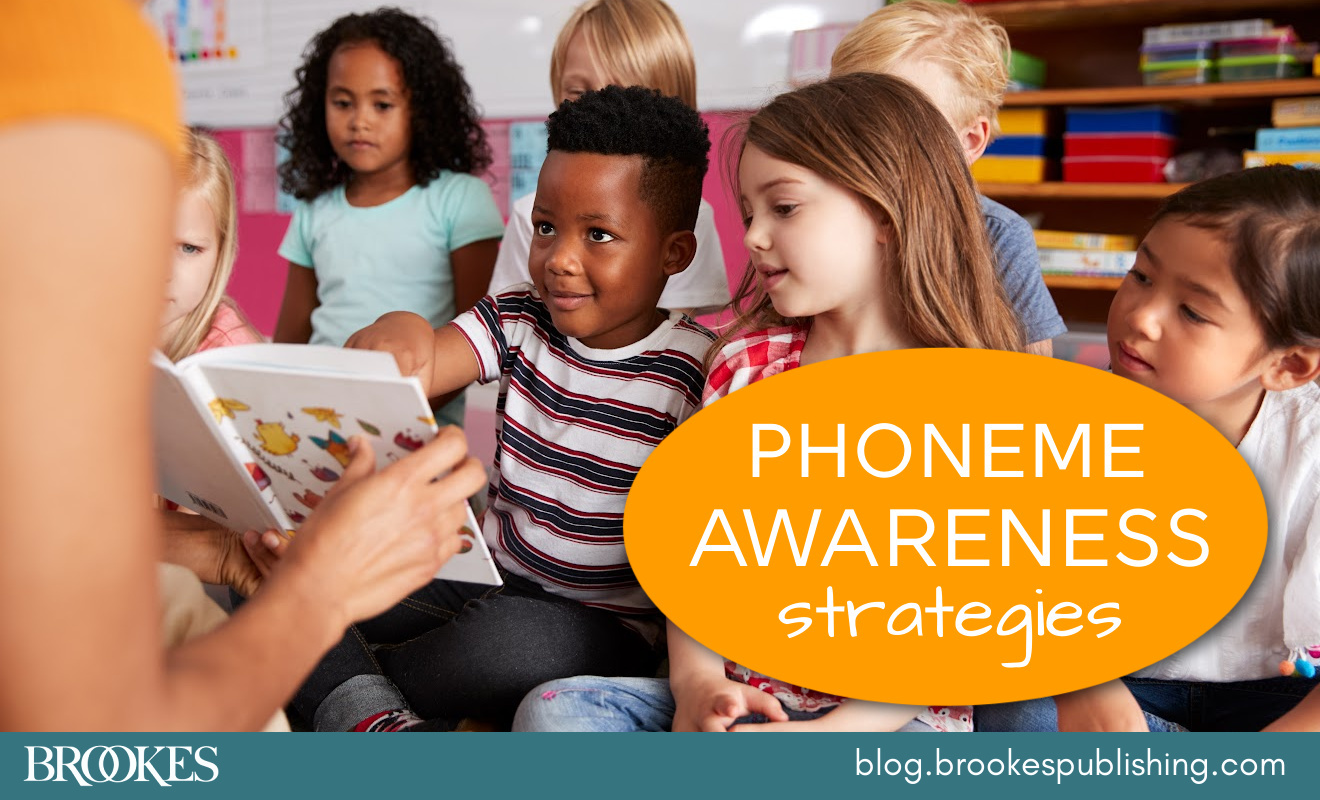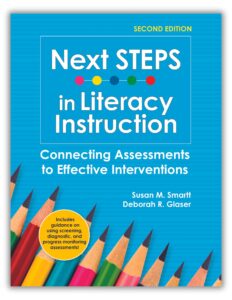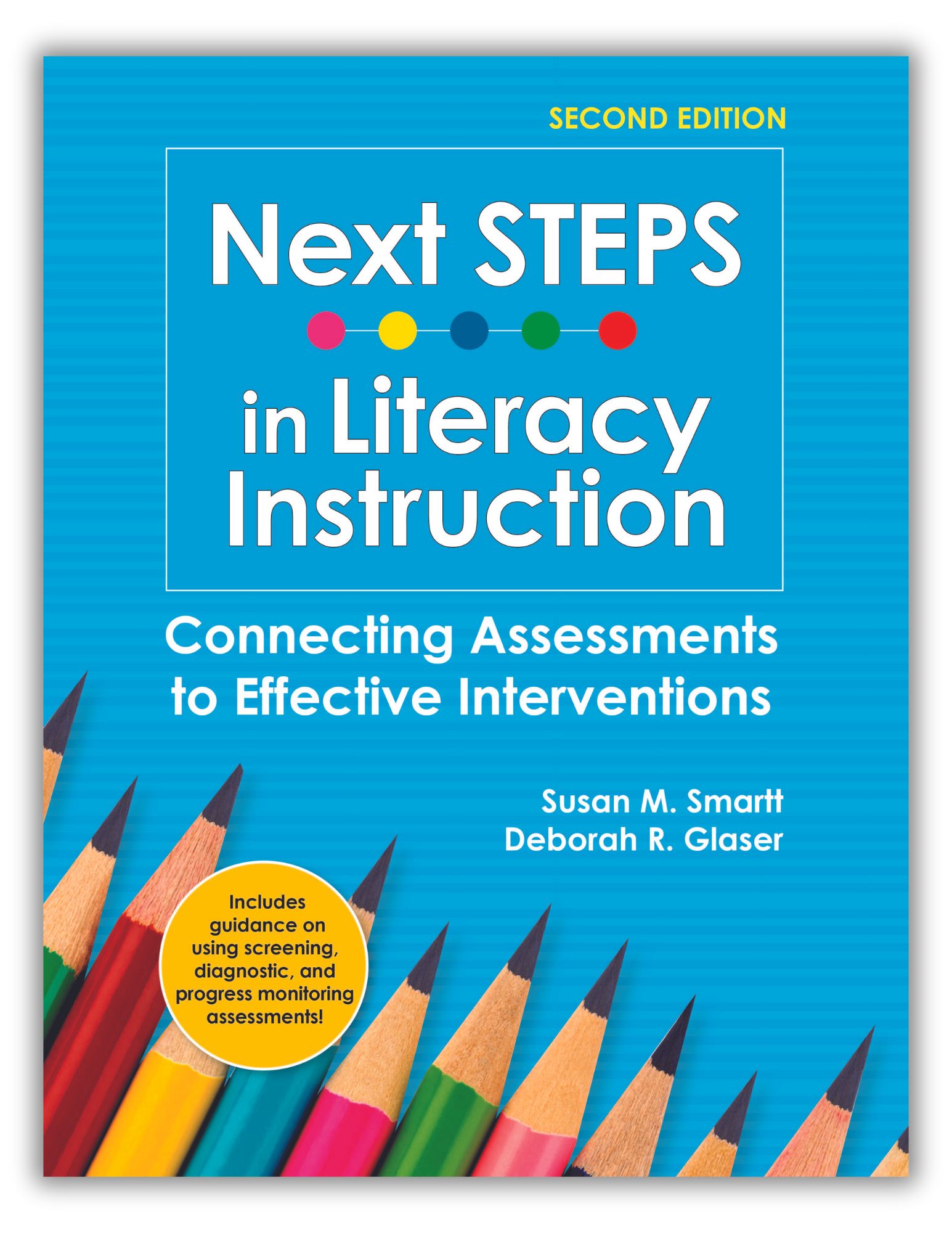9 Guidelines for Phoneme Awareness Instruction
October 19, 2023
 The ability to isolate, identify, and manipulate the individual sounds (phonemes) in words is one of the core skills children need to become proficient speakers and readers. What are the best ways to teach phoneme awareness to young children? Today’s post brings you 9 guidelines for supporting the development of phoneme awareness, excerpted and adapted from the new second edition of Next STEPS in Literacy Instruction by Susan Smartt and Deborah Glaser.
The ability to isolate, identify, and manipulate the individual sounds (phonemes) in words is one of the core skills children need to become proficient speakers and readers. What are the best ways to teach phoneme awareness to young children? Today’s post brings you 9 guidelines for supporting the development of phoneme awareness, excerpted and adapted from the new second edition of Next STEPS in Literacy Instruction by Susan Smartt and Deborah Glaser.
***
When children enter kindergarten, phoneme awareness instruction should begin in earnest. For students who are below benchmark levels on phoneme awareness assessments, teachers can use the following guidelines to inform instructional decisions:
Screen to determine students’ ability to isolate the initial, final, and medial phoneme. Group students who have similar needs.
Begin with phoneme awareness activities in the earliest stages to help direct students’ attention to language sounds. Start by teaching first sound awareness. Use words that begin with continuant consonants (with a short vowel to follow); words that can be held onto and extended such as /mmmmmman/, /sssssssun/, and /vvvvvvvvvan/; and sounds produced at or near the front of the mouth (/f/, /p/, /t/).
Use explicit and systematic instruction in small homogenous groups. Don’t leave the learning to chance or discovery—tell, show, and model the skill. Use mirrors and explore the articulation of phonemes as they are pronounced. Ask questions such as, “What are your lips doing when you say /b/?” For some students, the mirror makes phonemes real as they hear the phonemes while studying the articulation features (i.e., lips, tongue, teeth, and voiced or unvoiced).
Integrate phoneme awareness instruction with letter-sound knowledge and handwriting even in kindergarten. Remember, connecting speech to print improves phoneme awareness. Introduce a sound, isolate it, play with it using activities, and then introduce the letter for that sound. Use letters whose names reflect their phoneme (e.g., M-/m/, T-/t/, S-/s/).
Provide many opportunities throughout the day for brief phoneme activities. Compare and contrast phonemes in words’ pronunciations. Ask “What sound changes in the words dog (/d/ /o/ /g/) and log (/l/ /o/ /g/) or mop (/m/ /o/ /p/) and map (/m/ /a/ /p/)?” Hold onto the first sound in a word when giving directions: “What kind of picture will you mmmmmake?”
Provide individual or small-group instruction for at-risk students with an abundance of practice accompanied by teacher support and modeling: “Watch me.” “Listen to me.”
Monitor progress often. Informal progress monitoring can occur throughout daily lessons. (e.g., “Tell me the first sound/last sound in the word fish,” “Tell me each sound you hear in the word me,” or “I’m going to say some sounds: /b/ /a/ /t/; you put them together, and say them fast, bat”). You may also progress monitor more formally at least every 2 weeks with a curriculum-based measure such as Phoneme Segmentation Fluency (PSF). Increase instructional time, increase intensity (size of group), and review lesson content or materials if adequate progress toward the goal or benchmark is not being made.
Provide direct instruction and modeling of phoneme segmentation (wave = /w/ /ae/ /v/) and blending (teacher says, “/f/ /i/ /sh/” and student blends the sounds and says “fish”) with focused attention to phoneme segmentation working up to the segmentation of consonant blends into each of their component consonant phonemes (sleep = /s/ /l/ /ee/ /p/, lamp = /l/ /a/ /m/ /p/). Follow the same practice when modeling blending instruction; start with two sound CV and VC words (me, at) and move up to CVC (mom).
Be patient and give it time. Teaching students to “deconstruct” words may take some time and patience because their only experience with words so far has been as whole meaningful units (e.g., cup). Teachers now expect them to take apart, or segment, the word into individual phonemes (e.g., /c/ /u/ /p/), which is not an easy task for many.
A final tip is to keep in mind that older struggling readers often continue to need intensive focus on phonemes during small-group decoding and writing lessons. Teachers tend to think the work with phonemes is over once students leave the early grades, but that’s not the case. It’s important to assess struggling readers’ level of phoneme awareness to evaluate if weakness in this domain still exists and needs to be addressed.
For a complete guidebook this guidebook built around the National Reading Panel’s big five ideas and aligned with the science of reading, get the second edition of today’s featured resource!





Write a Comment
Your email address will not be published. Required fields are marked *
Post a Comment